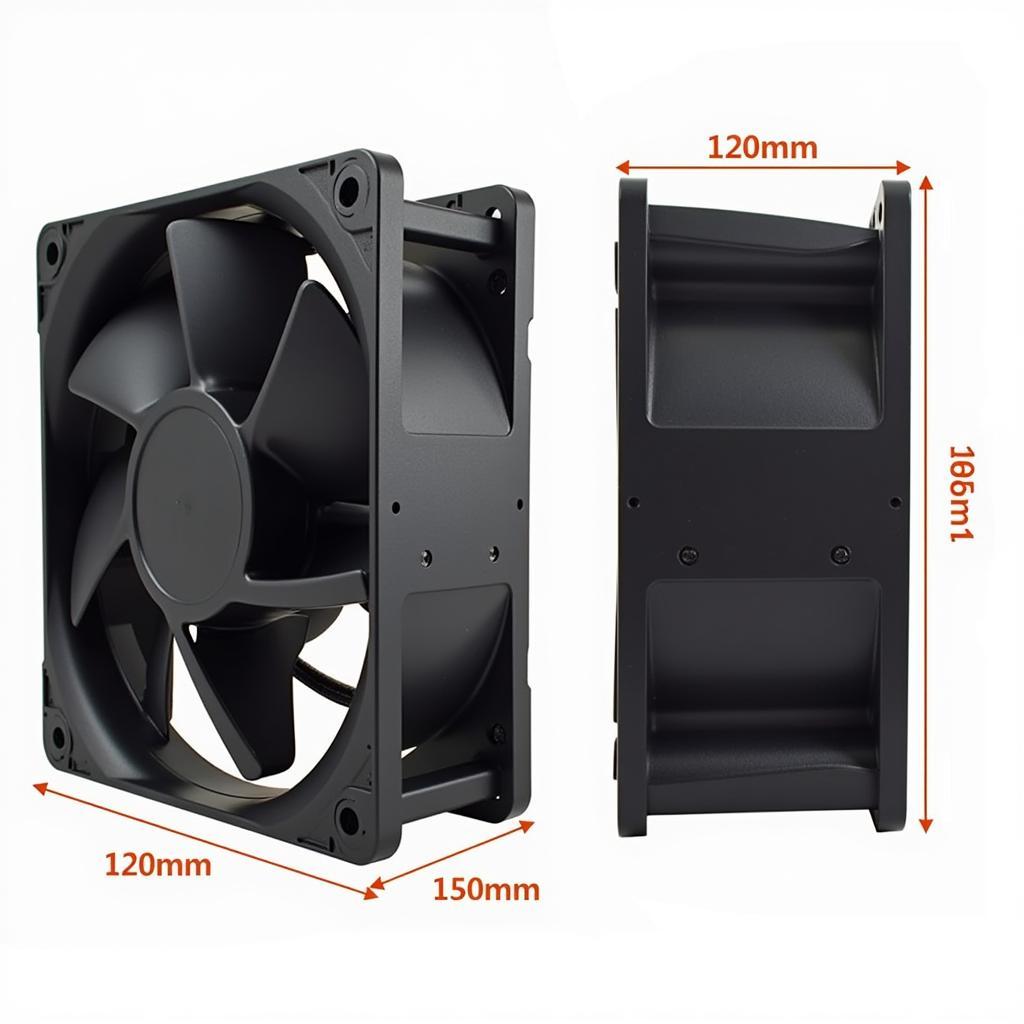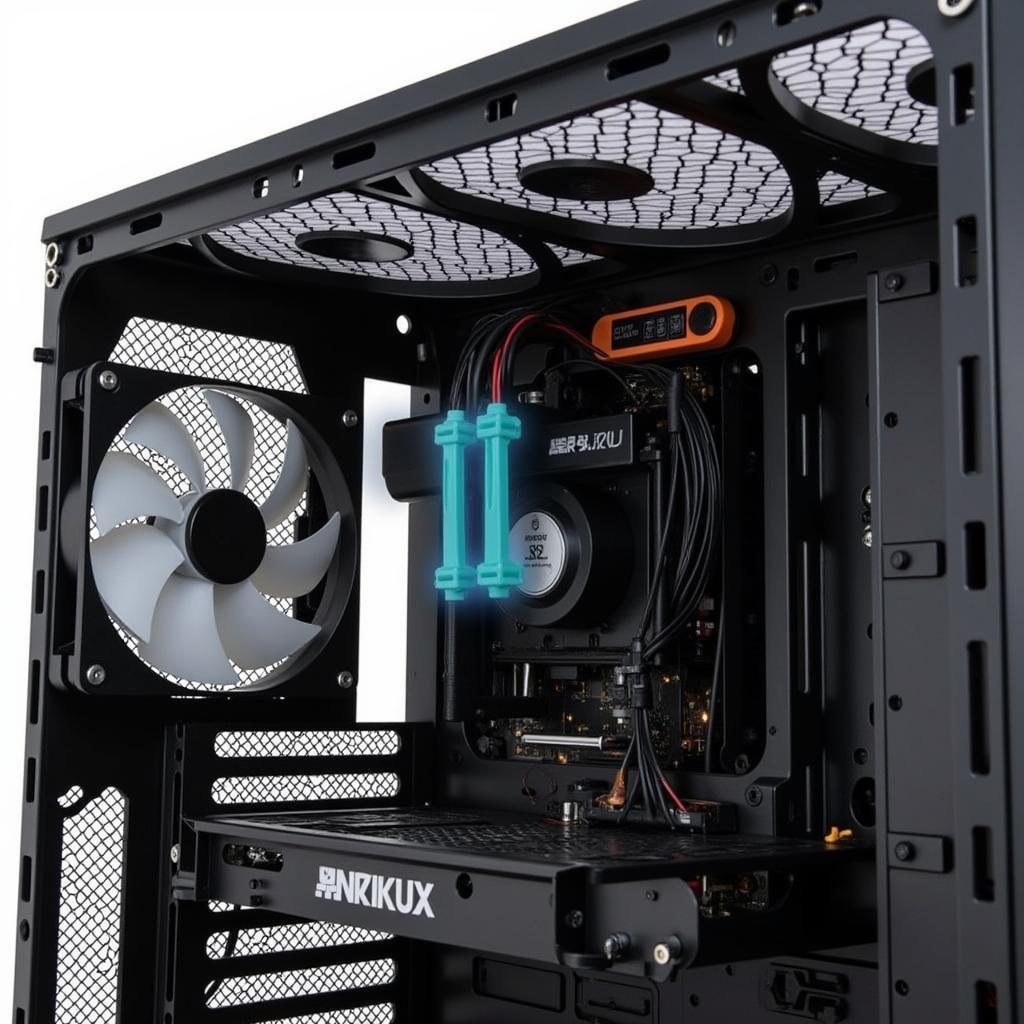Choosing the right cooling system is crucial for maintaining a healthy PC, and a key component of this system is the case fan. A Fan 120mm Size is a popular choice among PC enthusiasts for its balance of cooling performance and noise levels. But what exactly makes this size so sought after?
 120mm Case Fan Dimensions
120mm Case Fan Dimensions
Why Size Matters: 120mm Fan vs. Others
Case fans come in various sizes, with 120mm being one of the most common. This specific size has gained popularity due to several factors:
- Optimal Airflow: 120mm fans are engineered to move a significant volume of air while maintaining relatively quiet operation. This balance is crucial for efficient heat dissipation without generating excessive noise.
- Case Compatibility: Most PC cases are designed to accommodate 120mm fans, offering flexibility in placement for intake, exhaust, or even radiator mounting.
- Wide Availability: The widespread use of 120mm fans means a vast selection of models is available, from budget-friendly options to high-performance variants with advanced features.
 120mm Fan Installed in a PC Case
120mm Fan Installed in a PC Case
Choosing the Right 120mm Fan: Factors to Consider
While size is essential, other factors influence a 120mm fan’s effectiveness:
- RPM (Revolutions Per Minute): Higher RPM typically means more airflow, but it often comes at the cost of increased noise.
- CFM (Cubic Feet per Minute): This metric indicates the actual volume of air a fan can move. A higher CFM translates to better cooling.
- Static Pressure: This factor is crucial for fans used on heatsinks or radiators, as it measures the fan’s ability to push air through restrictive components.
- Noise Level: Measured in decibels (dBA), noise output is an important consideration, especially for those seeking a quieter computing experience.
- Bearing Type: Different bearing types, such as sleeve, ball, or fluid dynamic bearings, affect a fan’s lifespan, noise level, and performance.
Installation and Placement: Maximizing Your 120mm Fan
Proper installation and strategic placement are vital for your 120mm fan to perform optimally:
- Intake vs. Exhaust: Determine whether you need the fan to pull cool air into the case (intake) or push hot air out (exhaust).
- Airflow Direction: Ensure the fan’s rotation direction aligns with its intended purpose (intake or exhaust).
- Cable Management: Neatly route fan cables to prevent airflow obstruction and maintain a clean aesthetic inside your case.
 PC Case with Multiple 120mm Fans
PC Case with Multiple 120mm Fans
“A well-placed 120mm fan can make a world of difference,” says John Smith, a veteran PC builder and tech enthusiast. “It’s not just about cooling; it’s about creating the optimal environment for your components to thrive.”
Beyond Cooling: Aesthetics and Features of 120mm Fans
Modern 120mm fans often come equipped with features beyond basic cooling:
- RGB Lighting: Add a touch of personalization and style to your build with customizable RGB lighting effects.
- Fan Control Software: Monitor and adjust fan speeds based on system load or personal preferences.
- Low-Noise Adapters: These adapters reduce fan speed and noise output, ideal for low-demand scenarios.
Conclusion: The 120mm Fan – A Staple for PC Builders
A fan 120mm size remains a popular and effective choice for maintaining optimal PC temperatures. By understanding the key factors, you can select the perfect 120mm fan to enhance your system’s cooling, performance, and even aesthetics.
For those seeking a balance of performance and quiet operation, a Cooler Master case fan could be an excellent option. Those building a system with an AMD processor might find valuable information in our article about fan AMD.


